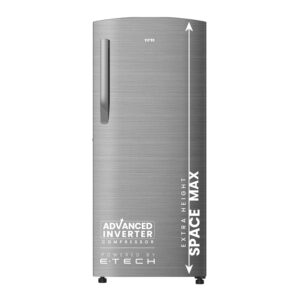Summer brings the joy of bonfires, barbecues, and festivals, but nothing beats the comfort of conditioned air during scorching months. However, this luxury comes at a cost, with air conditioning accounting for a significant portion of home electricity bills. According to the US Energy Information Administration (EIA), it contributes to about 17% of home electricity expenditures, rising to 27% in humid regions. It’s crucial to monitor and control air conditioner costs right from the start of the season.
While no one enjoys spending a hefty $500+ monthly on air conditioner, the good news is that reducing these costs is not only possible but also beneficial for the environment. This comprehensive guide provides 16 super easy ways to cut down air conditioning bills without compromising comfort, helping you save money and reduce harmful greenhouse emissions.
1. Give Your Windows a New Lease of Life
Investing in new energy-efficient windows can significantly reduce cooling costs. These windows come with a coating that minimizes infrared and ultraviolet light, preventing heat from escaping during winters and reflecting it away in summers. Though there’s an upfront cost, the long-term savings justify the investment.
2. Seal Your Windows for Air Leaks
Badly sealed windows let precious cooled air escape, forcing your AC to work harder. Identify and seal leaks or crevices around plumbing, utility access, attic entrances, air ducts, and windows to prevent air from leaking out and warm air from entering.
3. Open the Windows for Night-Time Ventilation
Embrace cross ventilation by opening windows at night. This simple and cost-free technique allows cool outdoor air to circulate, reducing the need for AC usage. Be cautious not to leave the AC on while windows are open, as it can strain the system and increase energy consumption.
4. Turn off Your AC When You Don’t Need It
Common sense, yet often overlooked—turn off your AC when certain rooms are unused or when leaving the house. Consider smart technology or programmable thermostats to automate temperature adjustments based on your schedule, ensuring the AC isn’t working unnecessarily.
5. Install a Programmable Thermostat or Deploy Smart Technology
Smart AC controllers or programmable thermostats enable precise temperature control and scheduling. Adjusting the temperature by 7 to 10 degrees for eight hours a day, especially when away, can save up to 10% annually. Smart technology offers even more energy-saving features.
6. Use Ceiling and Portable Fans
Ceiling fans promote air circulation and reduce the workload on your AC. Installing or using existing ceiling fans can significantly enhance energy efficiency. Portable fans strategically placed near windows or doors also contribute to better ventilation.
7. Replace HVAC Air Filters
Regularly replacing HVAC air filters improves efficiency by preventing dust accumulation. Dirty filters force the system to work harder, consuming more energy. Aim to replace filters every one to three months, ensuring optimal performance and energy savings.
8. Make Sure Your Air Conditioner Is the Right Size
Appropriately sizing your air conditioner for the room is crucial. An undersized unit works harder, while an oversized one consumes more energy than necessary. Ensure your AC is well-suited for the space to optimize cooling efficiency.
9. Don’t Skip Maintenance
Regular HVAC maintenance is essential for peak efficiency. Skipping maintenance tasks causes your HVAC system to work harder, leading to increased energy consumption. Invest in regular check-ups to keep your system running smoothly.
10. Strategically Place Your Household Appliances
Position heat-emitting appliances like refrigerators and stoves in well-ventilated areas to prevent unnecessary heating. Proper placement reduces the strain on your AC and contributes to overall energy savings.
11. Insulate Attics and Garages
Insulating your home, including attics and garages, prevents outdoor heat from infiltrating. Improved insulation minimizes the workload on your AC during summer, offering passive cooling and substantial energy savings.
12. Use Blinds, Curtains, and Shades
Strategic use of window coverings significantly reduces heat gain. Light-colored blinds, curtains, or awnings block out the sun, helping maintain a cooler indoor environment. Proper management of window coverings can decrease heat gain by up to 77%.
13. Make Your Roof a Light Color
Opting for a light-colored or reflective roof reduces heat absorption. Dark-colored roofs can cause temperatures to rise significantly, making your AC work harder. A light-colored roof naturally keeps your home cooler, minimizing the need for excessive cooling.
14. Install Solar Panels
Solar panels harness renewable energy, significantly reducing the energy required to run your HVAC system. Though the initial investment may be high, solar panels offer long-term savings, making them a worthwhile investment for energy-conscious homeowners.
15. Find Lower Ground
Spending more time on lower floors of your home naturally reduces the need for AC usage on upper floors. This simple lifestyle adjustment can make a considerable difference in energy consumption, especially during daytime hours.
Reducing air conditioning bills isn’t just about saving money; it’s a collective effort to adopt an eco-friendlier lifestyle. By implementing these 16 easy and practical ways, you not only cut down on monthly costs but also contribute to a greener, more sustainable future. Embrace these changes, create a comfortable living space, and enjoy the benefits of reduced energy consumption and lower electricity bills. Make informed choices, prioritize energy efficiency, and let cool comfort be both cost-effective and environmentally friendly.





